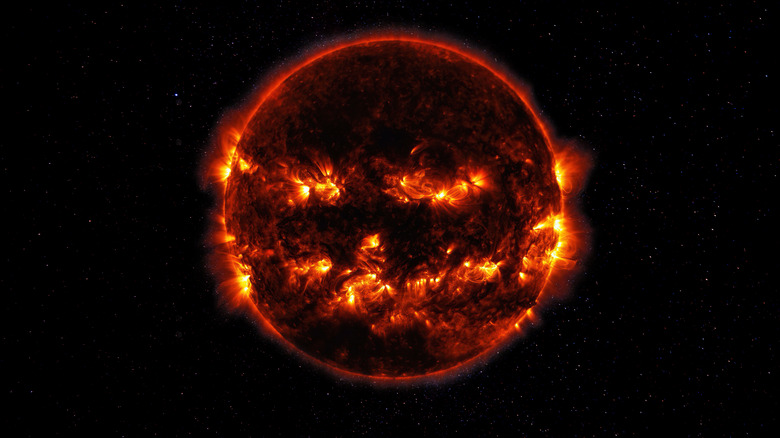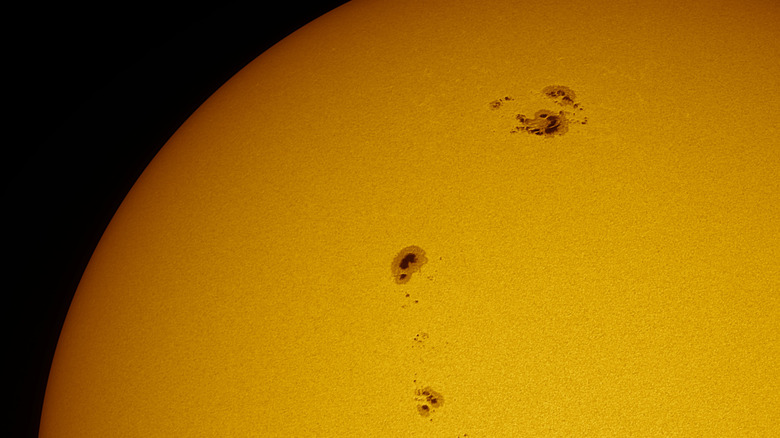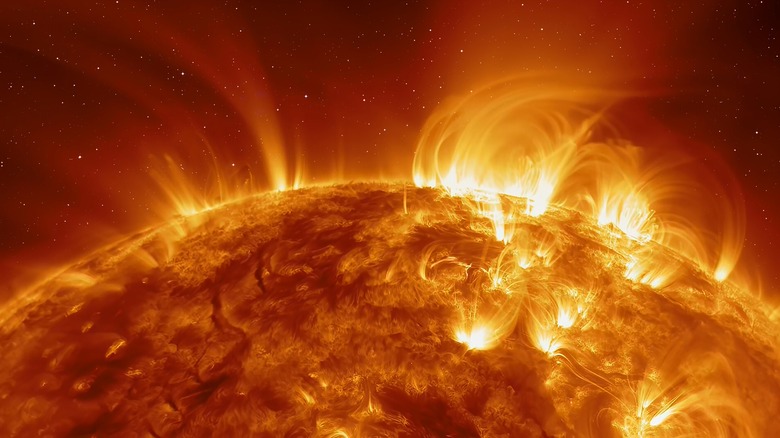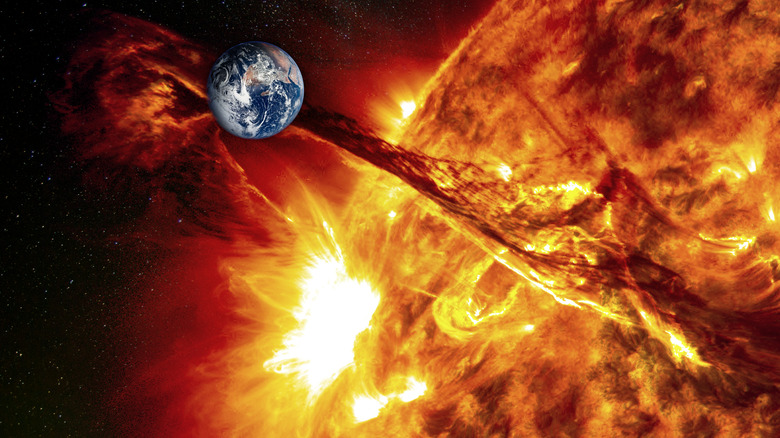What Is A Sunspot?
Out of everything in the sky, nothing has been as important to humanity as the sun. Ancient cultures revered it as a god and tracked its movements throughout the year. Over 2000 years ago, astronomers first began to record blemishes on the face of the sun which they believed were omens of important events (via Windows to the Universe).
With the invention of the telescope in the 17th century, astronomers were finally able to get a close look at the phenomenon. During his solar observations, Galileo Galilei noted that the sunspots moved across the face of the sun, and correctly deduced that the sun was rotating (via British Library).
In 2010, NASA launched the Solar Dynamic Observatory to monitor the changing of the sun and how it affects the earth. It, along with the Solar and Heliospheric Observatory keep a close eye on not just sunspots, but solar weather in general. Today, it observes a sunspot (dubbed AR3038) doubling in size in just 24 hours. The sunspot, which could produce a solar flare, also happens to be pointed directly at us (via Newsweek).
So what is it?
Visually, sunspots are dark spots on the surface of the sun. They appear darker than the surrounding surface because they are thousands of degrees cooler. The photosphere of the sun (the part that we can see) is roughly 10,000 degrees Fahrenheit. Sunspots, on the other hand, are only around 6,000 degrees (via National Weather Service).
The cooler temperatures are caused by massive magnetic fields (over 2,000 times stronger than the earth's) rising up to the surface of the sun. These magnetic fields prevent hotter gas from inside the sun from rising up to the surface (via Space.com).
Sunspots are not permanent fixtures of the sun. Along with growing and shrinking as they travel across the face of the sun, they also come and go in an 11-year cycle. 2022 marks three years into the current cycle and three years away from the predicted maximum in 2025.
Why do we care about sunspots?
Sunspots are the barometer by which we measure the seasons of the sun. More sunspots beginning to appear on the sun indicates that we are approaching a solar maximum, and as they begin to disappear we enter a solar minimum (via Space.com).
Another solar phenomenon, solar flares, tend to come from the same region of the photosphere as sunspots. The same magnetic forces that can suppress the pent-up fury of the sun can also release it. The energy released in these solar flares is more powerful than millions of nuclear weapons and can be tens of millions of degrees.
Solar flares come in five categories based on how much x-ray energy they release. Like the Richter scale, each increase in scale corresponds to a 10-fold increase in intensity. A-, B-, and C-class flares are too small to affect us on earth. M-class flares can endanger astronauts and affect radio communication on earth. The largest of the bunch are X-class flares which, if pointed toward earth, can damage satellites and power grids (via NASA).
Are we in any danger?
No. Any solar flare that might erupt from around this current sunspot is only capable of producing an M-class flare, according to Newsweek. If AR3038 were to unleash an M-class flare and it hit the earth, you probably wouldn't notice. In fact, the earth was hit by an M-class flare just last month, and unless you were a ham radio operator trying to operate on specific radio bands, you wouldn't have been affected.
But what if a larger solar flare were released? The largest solar storm on record happened around Halloween in 2003 when the sun unleashed two X-class flares, both triggering coronal mass ejections (clouds of superheated solar gas) that crashed into the earth. The effects on the surface were minimal: Sweden experienced a temporary power outage and Antarctic scientists lost all communications for over five days. Flights that would typically fly over the north pole were forced to reroute, costing thousands of dollars. Every satellite in orbit around the sun-facing side of the planet was affected in some way, some being damaged permanently. And most spectacularly, the Aurora Borealis, the Northern Lights, briefly extended as far south as Texas.
The head of the Space Weather Forecast Office at the National Oceanic and Atmospheric Administration tells USA Today that AR3038 is a normal sunspot that hasn't displayed any unusual activity. Despite having the potential to produce an M-class flare, there's only a 30% chance that it will. In other words, we're going to be fine.



